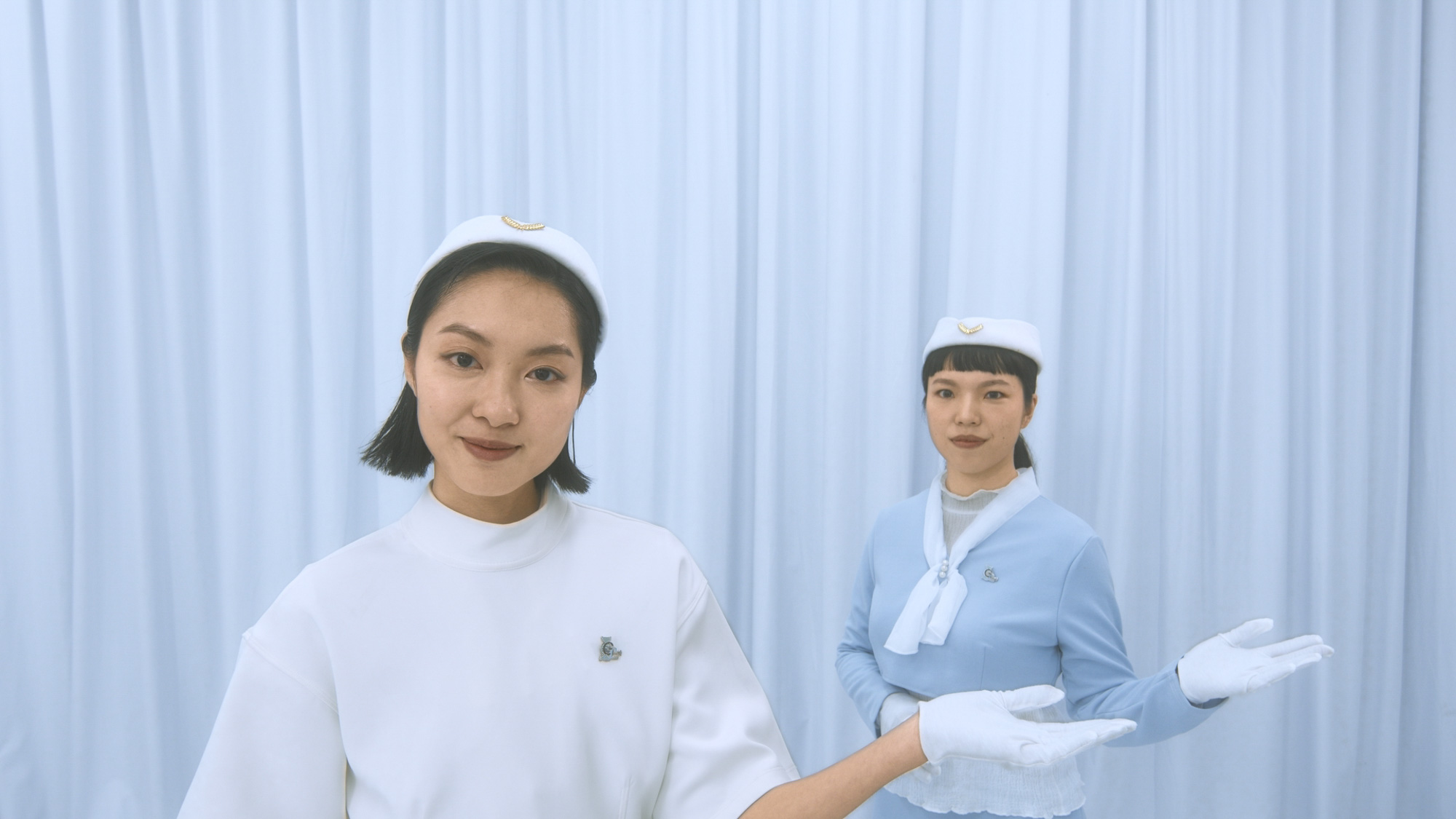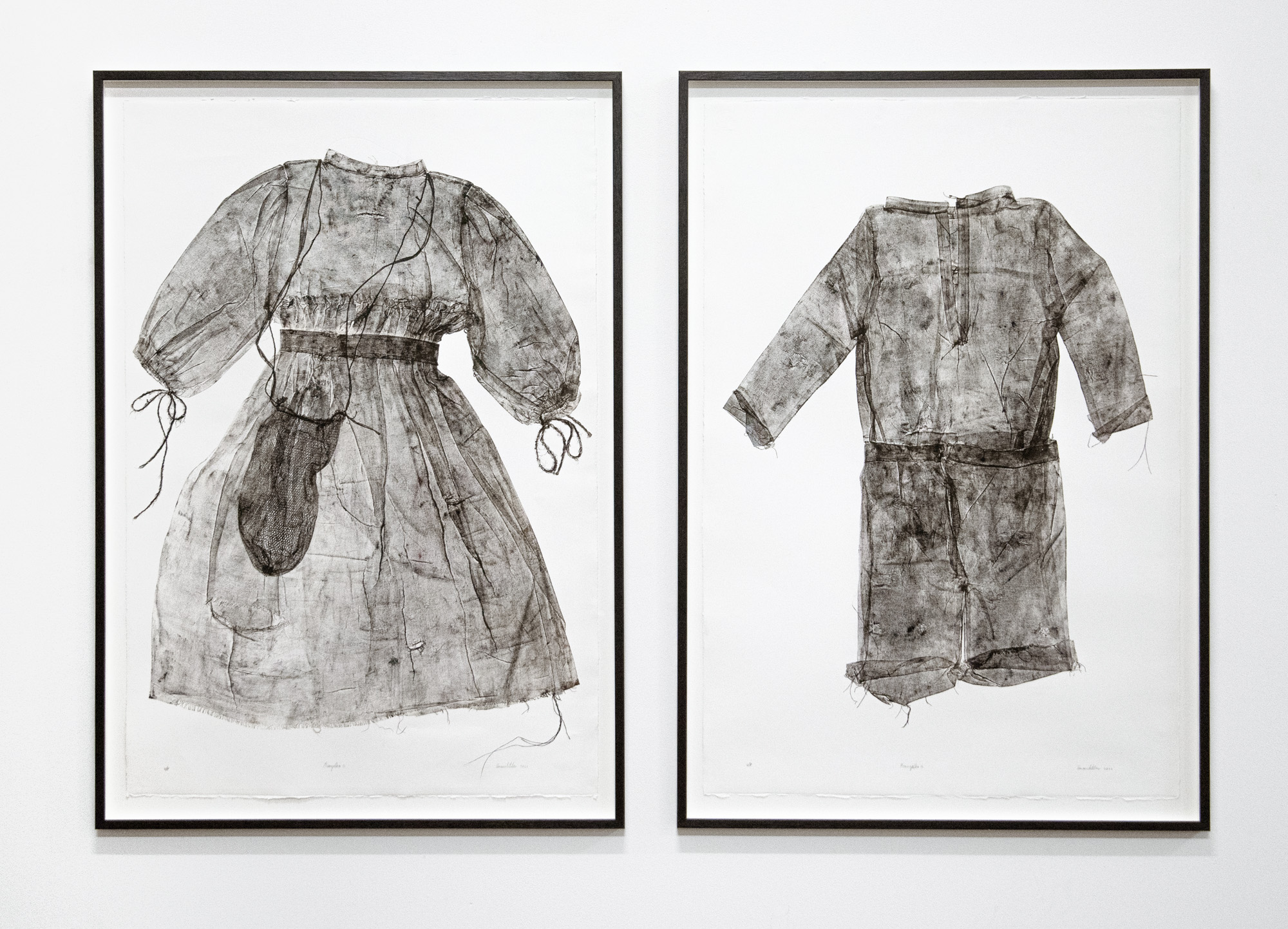New Currents: Bobby Yu Shuk Pui, Kyra Mancktelow, Yao Cong
By Pamela Wong, Suining Sim, Cassie Liu

BOBBY YU SHUK PUI, Genetic Salon – Waiting Room, 2021, still from video: 17 min 25 sec. Courtesy the artist.
Bobby Yu Shuk Pui
HONG KONG/OSLO
I nearly stumbled over the siliconereplicasofbreasts on the floor as I walked into the group exhibition “Yummy Gummy” at Hong Kong’s Tomorrow Maybe in 2019. Titled You’re so SMALL, so CHINESE (2015), the work was multimedia artist Bobby Yu Shuk Pui’s attempt to address the under-representation of her body shape in the sex-toy market, and debunk the stereotype of Chinese women having small and thus undesired breasts. She later revisited the cultural ideals of beauty and femininity in her installation Miss Perpetual: Form Piece (2017), for which she filled in a decade’s worth of applications for the Miss Hong Kong Pageant to see if she fits each year’s requirements, which include being unmarried, not pregnant, and childless. Yu’s playful works prompt us to rethink how perceptions of beauty are tied to mass culture.
After reading the book Sapiens: A Brief History of Humankind (2014), in which the author Yuval Noah Harari predicts technologies that will change the trajectory of human history, Yu turned to consider genetic engineering and the physical ideals that we subscribe to as a species. Her series Genetic Salon (2021– ), inspired by the news of Chinese twins whose genes were illegally edited in 2018, imagines a future where humans can customize their physical appearances or even become plants or other animals. As part of the project, she created the dark, immersive installation Red Room at the Oslo National Academy of Art, where she completed her MFA in 2021, inviting audiences to embark on an archaeological dig in the debris of a fictional genetic-engineering museum. Equipped with flashlights, visitors uncovered objects, including sculpted apples and tree branches, which, according to the wall labels, are humans who could not reverse their decisions to become plants. A projector plays the video Waiting Room, wherein receptionists brief customers about to undergo genetic transformations. The video cuts abruptly, leaving the actual procedure unknown. Speculating at the impacts of genetic engineering, Yu hints at the often unforeseeable disadvantages and ethical concerns born from fast-paced technological developments, and asks whether perfected genes and biological features mean a perfected existence.
PAMELA WONG

KYRA MANCKTELOW, Moongalba II, 2021, two monoprints on Hahnemuhle paper, 120 × 80 cm each. Courtesy the artist and N. Smith Gallery, Sydney.
Kyra Mancktelow
BRISBANE
Two monoprints, each depicting a child’s uniform, were hung on a wall at Sydney’s N. Smith gallery. A dilly bag bounces against the skirt of the high- collared dress, and the long-sleeve shirt next to it is tucked into a pair of shorts. It is the absence of the children—brought into sharp relief by the imprint of what would have once covered their bodies—that makes the images devastating. A Quandamooka printmaker and sculptor with links to the Mardigan people, the 24-year old Kyra Mancktelow won the 2021 Telstra Emerging Artist Award with this work, titled Moongalba II (2021). Reflecting the artist’s interest in exploring colonial legacies and intergenerational trauma, the prints recreate the uniforms of the Myora Mission school, where Aboriginal children of the Stolen Generation were taken and forced to assimilate into European culture.
“Any history to do with Australia I consider haunting,” begins Mancktelow’s biography. The settler-colonial claim to land rests on the destruction of Indigenous peoples into ghosts, and the disruption of Indigenous relationships to land. In Born Under a Tree (2021), Mancktelow tells the story of her great-grandfather through a series of clay columns, stylized to represent the tree he was born under before he was abducted and “adopted” into a Western family. The trunks are broken to denote a fracture in the family line; another child uprooted from Country, adrift on home soil.
But ghosts always come back. Mancktelow’s work is not desolate—the clay fragments of Born Under a Tree bear Indigenous markings, and are conjoined with woven natural fibers to represent the strength of community. Remediation similarly underlies the process behind Moongalba II, where the artist covers Tarleton fabric in ink to make stencils, a subversion of the cloth’s usual function of cleaning ink from etching plates. Here is Mancktelow the descendent, returning her ancestors’ erased identities, her works a conduit for narratives once lost to colonial history. One wonders if this might help her forebears find peace, their once-untethered consciousness settling onto bodies that are spectral no more.
SUINING SIM

YAO CONG, photo from the series Gold Words, 2019-20, digital photographs, dimensions variable. Courtesy the artist.
Yao Cong
BEIJING/XI’AN/SHANGHAI
A fine brush gently sweeps across an eyelid, blending violet and coral eye shadow and rendering an exquisite feminine persona who draws viewers into Yao Cong’s 2015 short video Under Blue. Yet this sequence does not last long. A sapphire pigment falls, covering the skin. The lens gradually shifts from the actor’s face down a body disguised by blue powder to their male genitals, revealing the compelling beauty of this androgynous figure.
Yao’s early artistic interest in queer bodies, exemplified by Under Blue, led him to explore the fluidity of gender, race, and sexuality during his MFA at the Royal College of Art in London. In Uncertain Game (2017), a 17-minute video made for his graduation project, a gender-ambiguous and ethnically undefined protagonist embarks on a journey that symbolizes the delicate process of attaining sexual pleasure. In the video, they are carried on a hammock through the woods before ascending an old abandoned diving platform the middle of a lake, where they jump into the water and become a mermaid. In this depiction of a shape- shifting body, Yao overrides dichotomous and separatist ideas that constrain individual expressions of identity.
Yao’s recent works in his solo exhibition “Flies Beyond the Clouds” (2021) at Capsule Shanghai shifted in subject from gender and ethnicity to broader notions of identity. The photography series Gold Words (2019–20) depicts bodies seemingly abandoned in a barren desert, each covered in white cloths that are embroidered with the phrase, “An artist who is not based in the good place is no artist.” With its desolate setting evoking scenes of refugees and migrants perishing on dangerous voyages, the work questions how conventional conceptions of geopolitical superiority affect our idea of who is an artist. Also featured in the show was the ten-channel video work The Square Reserve (2020–21), in which Yao invited ten people of different genders, ages, and occupations to drink and dance on an artificial patch of grass in the open desert. Although seemingly restricting the performers’ positions, the small green square—with nothing but barren land around it—creates a symbolic heterotopia where they freely express who they are with their bodies.
CASSIE LIU
.jpg)







